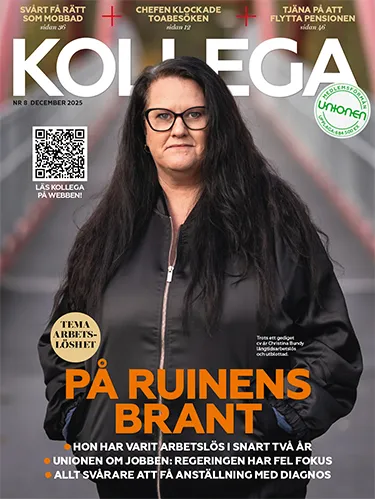Professor Gunnar Johansson vill, utifrån sina erfarenheter, förändra hur trakasserier på jobbet utreds.
Även den norske arbetsmiljöforskaren Ståle Einarsen är kritisk mot hur systemet fungerar i dag. Han vill att Arbetsmiljöverket tar en mer aktiv roll, och sätter press på arbetsgivaren.
När ord står mot ord om mobbning på en arbetsplats måste alla fakta upp på bordet, framhåller han.
– Det är viktigt att utgå från faktiska förhållanden och göra det på ett sätt så att det inte uppstår jävsproblematik. Det ska finnas en skriftlig dokumentation som kan kontrolleras av andra, säger Ståle Einarsen, professor i arbets- och organisationspsykologi vid Universitetet i Bergen.
Tillsammans med det norska Arbetsmiljöverket och arbetsmarknadens parter har han utvecklat ”Faktaundersökelse”, en metod för att utreda mobbningsärenden som även har använts på arbetsplatser i Sverige.
Metoden går ut på att undersöka fakta på ett systematiskt sätt. Utredaren, som ofta har uppdraget som en del av sin anställning inom företagshälsovården eller på en HR-avdelning, samlar information från de inblandade parterna, hör vittnen och går igenom skriftlig information.
– Det måste finnas en skriftlig dokumentation som kan kontrolleras av andra. Replikrätt är viktigt och man måste utreda alla de involverade parternas utsatthet, säger Ståle Einarsen.
Arbetsmiljöverket kräver inte utredning om mobbning
Utredningen går till på ungefär samma sätt om det är en chef eller kollega som är mobbaren. Men behovet av en oberoende utredning kan vara ännu större om det är en ansvarig chef som är anmäld för mobbning, betonar han.
Metoden fick snabbt brett genomslag i Norge när den lanserads för snart 20 år sedan. Men den har också fått kritik, till exempel att det trots ambitionen om en oberoende utredare är arbetsgivaren som formulerar problemet.
– Bäst vore om Arbetsmiljöverket hade en mer aktiv roll i mobbningsärenden. Det gäller både Norge och Sverige. Myndigheten borde kontrollera hårdare att utredningar verkligen kommer till stånd, men också ha resurser och kompetens för att själv kunna utföra oberoende utredningar i särskilt svåra fall, säger Ståle Einarsen.
Arbetsmiljöverket i Sverige ställer krav på arbetsgivare att förebygga och hantera mobbning och kränkande särbehandling, men myndigheten kräver inte att arbetsgivare utreder enskilda mobbningsfall på jobbet.
– I arbetsmiljölagen står inget om hur man ska hantera kränkande särbehandling. Därför ställer vi inte heller krav på utredning. Arbetsmiljöverket går inte in i enskilda ärenden, särskilt inte för att avgöra skuld eller kompensation, säger Ulrich Stoetzer, sakkunnig i frågor om kränkande särbehandling och andra former av organisatorisk och social arbetsmiljö.
Varför gör ni inte det?
– Det ligger inte i vårt uppdrag. Det är parterna och arbetsdomstolen som gör sådana avgöranden.
Så arbetsgivaren är inte skyldig att göra en utredning av ett mobbningsärende som uppstår på arbetsplatsen?
– Inte utifrån vår lagstiftning. Vi ställer inga krav om att det ska utredas om det förekommit kränkande särbehandling eller inte. Det vi ställer krav på är att arbetsgivaren ska utreda om det finns något i arbetsmiljön som bidragit till detta så man kan förebygga det i framtiden. Här utgår vi från våra föreskrifter om systematiskt arbetsmiljöarbete.
Finns det någon annan lagstiftning som kräver att arbetsgivaren utreder?
– Ja, om mobbningen kan få arbetsrättsliga konsekvenser. Om det handlar om någon form av diskriminering kan diskrimineringslagen tillämpas.
Kan Arbetsmiljöverket gå in och vara en oberoende part i en utredning om mobbning på jobbet?
– Det är tveksamt rent juridiskt. Om det ändå skulle gå är det en fråga om resurser. Då behöver vi ett helt annat uppdrag.
Arbetsmiljölagen är framåtsyftande och reglerar arbetsgivarens skyldighet att förebygga olyckor och brister i arbetsmiljön, framhåller Ulrich Stoetzer.
– Arbetsgivaren ska ha klargjort för alla arbetstagare att den här typen av beteende inte accepteras. Arbetsgivaren ska också undersöka arbetsmiljön med utgångspunkt i risken för kränkande särbehandling. Här handlar det om att titta på arbetsbelastning, konflikter och annat som kan bidra till att det uppstår sådant beteende, säger han.
1 av 10 utsatt för kränkande särbehandling
Ulrich Stoetzer är psykolog i grunden och har arbetat med frågor om kränkande särbehandling i 25 år.
– Man brukar prata om att 8-12 procent av alla anställda känner sig utsatta i någon grad, från att man kallar varandra saker man inte borde till systematisk mobbning. Att en av tio är utsatt för kränkande särbehandling är alarmerande. Dels för att det påverkar hälsan och kan leda till psykisk sjukdom, dels för att medarbetare riskerar att hamna utanför arbetsplatsens gemenskap.
Varför uppstår mobbning?
– Om arbetsmiljön är dålig med för hög arbetsbelastning ser vi att beteendet med mobbning och andra former av kränkande särbehandling ökar. Är man utsatt för ständig stress och press och känner att man inte har tillräckligt med tid så tar det på humöret och risken finns att nu börjar man ta ut sin frustration på andra, säger Ulrich Stoetzer.










